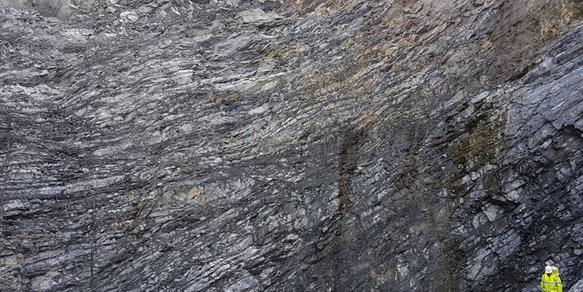
Aquifer categories
Different aquifers have differing abilities to store and transmit water. This means that the chances of obtaining large new groundwater supplies will vary with location. In risk terms, the environmental consequences of, for example, a groundwater pollution incident, will also vary.
Geological Survey Ireland (GSI) aquifer categories which can be used to define the relative value of aquifers in Ireland. The classification system is based on the UNESCO-IHP system, and on progressive developments within the GSI in consultation with the Irish hydrogeological community (Daly, 1995 ). The aquifer categories, summarised in the Groundwater Protection Schemes document (DELG/EPA/GSI, 1999).
All parts of the national territory have been assigned to one of the nine aquifer categories. The task of classifying each area of bedrock or subsoil into an aquifer category is undertaken by GSI. The aquifer category maps can be interactively viewed through our webmapping viewer.
The aquifer categories are intended to describe both resource potential (Regionally or Locally important, or Poor) and groundwater flow type and attenuation potential (through fissures, karst conduits or intergranular). The two letter aquifer code is made up of the aquifer resource value and how the groundwater flows in the bedrock or sand & gravel aquifer. They are as follows, with more information available in the aquifer category descriptions document:
Regionally Important (R) Aquifers:
- Karstified bedrock (Rk)
- Fissured bedrock (Rf)
- Extensive sand & gravel (Rg)
Locally Important (L) Aquifers:
- Sand & gravel (Lg)
- Bedrock which is Generally Moderately Productive (Lm)
- Bedrock which is karstified to a limited degree or limited area (Lk)
- Bedrock which is Moderately Productive only in Local Zones (Ll)
Poor (P) Aquifers:
- Bedrock which is Generally Unproductive except for Local Zones (Pl)
- Bedrock which is Generally Unproductive (Pu)
The broad range of karst regimes has been compartmentalised into three categories. Where karstification is slight, the limestones are similar to fissured rocks and are classed as Rf, although some karst features may occur. Aquifers in which karst features are more significant are classed as Rk. Within the range represented by Rk, two sub-types are distinguished, termed Rkc and Rkd.
- Rkc are those aquifers in which the degree of karstification limits the potential to develop groundwater. They have a high ‘flashy’ groundwater throughput, but a large proportion of flow is concentrated in conduits, numerical modelling using conventional programs is not usually applicable, well yields are variable with a high proportion having low or minimal yields, large springs are present, storage is low, locating areas of high permeability is difficult and therefore groundwater development using bored wells can be problematical.
- Rkd aquifers are those in which flow is more diffuse, storage is higher, there are many high yielding wells, and development of bored wells is less difficult. These areas also have caves and large springs, but the springs have a more regular flow.
Aquifer types
The aquifer categories can be grouped into Aquifer Types:
- Karstic (Rk and Lk) aquifers
- Gravel (Rg and Lg) aquifers
- Productive fractured bedrock (Rf and Lm) aquifers
- Poorly productive bedrock (Ll, Pl and Pu) aquifers
This grouping is based on similarities in a) hydrogeological properties; b) resource value; c) likely monitoring requirements; d) influence on surface water characterisation; and e) the likely measures required to manage the groundwater. These Aquifer Types are used in delineating
Groundwater Bodies, along with other information.